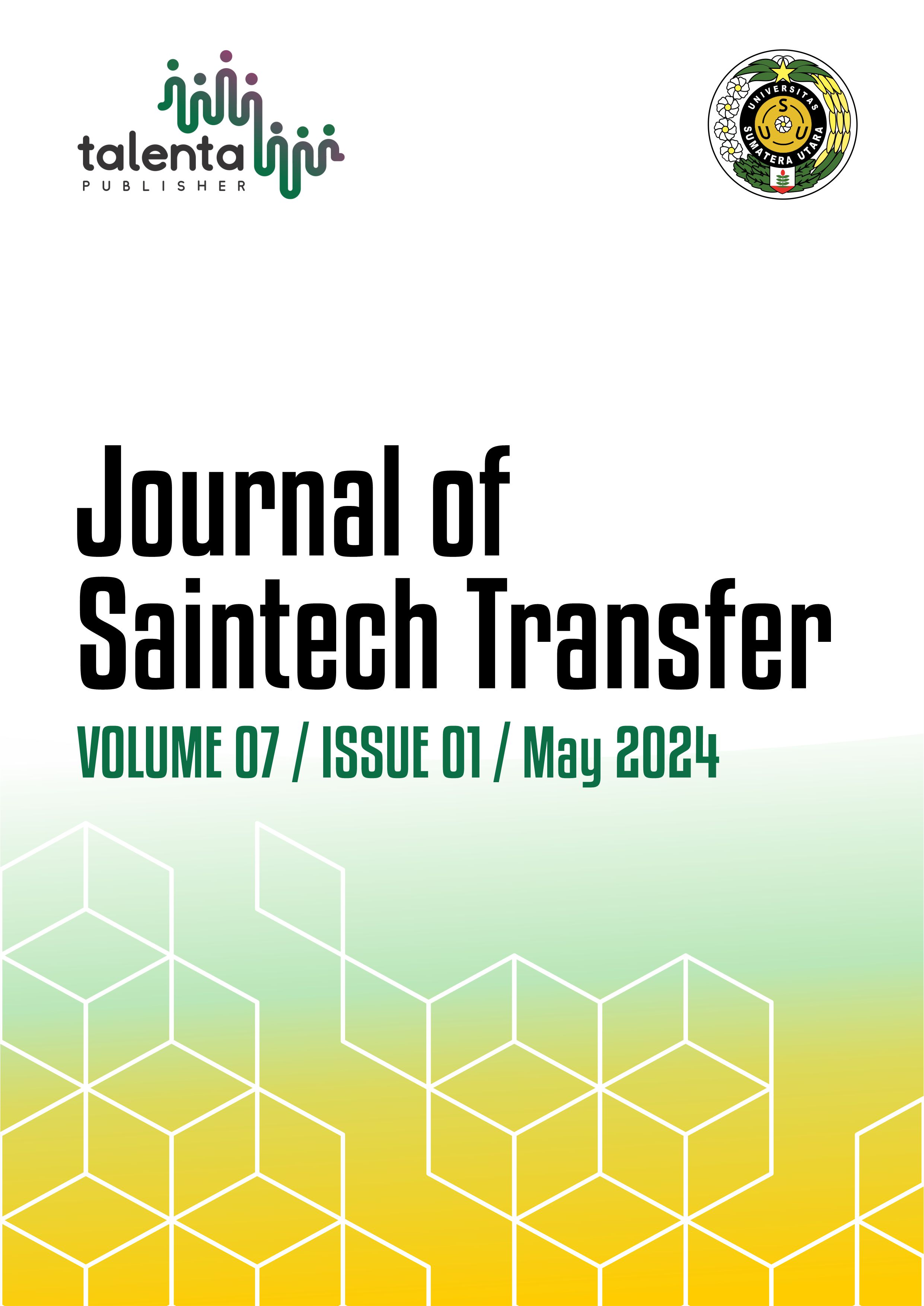Application of Appropriate Technology for Making Organic NPK Fertilizer by Utilizing Palm Oil Mill Waste in Bekiung Village
DOI:
https://doi.org/10.32734/jst.v7i1.13433Abstract
Bekiung is one of the villages in Langkat Regency. Farmers in this village generally cultivate a lot of oil palm plants. The waste is quite large and causes environmental pollution problems. On the other hand, experience problems in the form of scarcity and expensive synthetic fertilizers, subsidized fertilizers that are no longer available, and less fertile soil. This is due to the lack of knowledge and skills of farmers, limited advice and infrastructure in waste processing. The aim of this activity is to increase farmers' knowledge and skills in processing palm oil waste into organic NPK fertilizer, open farmers' insight into the importance of organic fertilizer as a diversification of synthetic fertilizer which is beneficial for soil properties and increase the independence of partners in waste processing. The solution offered to overcome this problem is the introduction of appropriate technology and processing palm oil factory waste into organic NPK fertilizer. The methods used in this activity are socialization and direct practice in the field. The results obtained were the introduction and delivery of technology transfer equipment in the form of a hummer mill, conveyor and simple filter, training and assistance in making organic NPK fertilizer up to packaging. The conclusion of this activity is that it is a beneficial activity for partners because it increases the understanding and independence of partners in processing palm oil mill waste into organic NPK fertilizer which can overcome the problem of the availability of scarce and expensive fertilizer.
Downloads
References
W. Darmosarkoro, “Aplikasi limbah cair pabrik kelapa sawit (land aplication) di Perkebunan Kelapa Sawit Pusat Penelitian Kelapa Sawit Medan†[Application of palm oil mill effluent (land application) at the Oil Palm Plantation of the Medan Oil Palm Research Center]. Jurnal Pusat Penelitian Kelapa Sawit vol. 2, no.1, pp. 39-39, 2016. (in Indonesian).
I.N. Dibia, M.D. Dana, M.D. Trigunasih, T. Kusmawati and M.D.S. Sumarniasih, “Pembuatan kompos bokashi dari limbah pertanian dengan menggunakan aktivator EM4 di desa Megati Tabanan†[Making bokashi compost from agricultural waste using EM4 activator in Megati village, Tabanan]. Jurnal Pengabdian kepada Masyarakat Udayana Mengabdi vol. 9, no.1, pp.10-20, 2010. (in Indonesian).
M. Dorci, Peni, P. Andri, Timung, M. Didiana and L. Emirensiana, “Pengaruh interaksi bokashi dan pupuk organik cair daun gamal terhadap pertumbuhan dan hasil sawi†[Effect of interaction of bokashi and liquid organic fertilizer of gamal leaves on the growth and yield of mustard greens]. Agrovigor Jurnal Agroekoteknologi vol. 14, no. 1, pp. 47-54, 2021. (in Indonesian).
Fitriani, K. Eddy and Jalaluddin, “Pemanfaatan limbah cair industri kelapa sawit sebagai pupuk organik cair dengan penambahan abu tandan kosong kelapa sawit†[Utilization of palm oil industry liquid waste as liquid organic fertilizer with the addition of empty palm oil bunch ash] Prosiding SNST vol.12, no. 1, pp. 39-44, 2021. (in Indonesian).
A. Rinaldi, Ridwan and M. Tang, “Analisis kandungan pupuk bokashi dari limbah ampas teh dan kotoran sapi†[Analysis of bokashi fertilizer content from tea waste and cow manure] Jurnal SAINTIS vol. 2, no. 1, pp. 5-13, 2021. (in Indonesian).
Sundari, Elmi, Sari, Ellyta, Rinaldo dan Riko, “Pembuatan pupuk organik cair menggunakan bioaktivator bioscb dan EM4†[Making liquid organic fertilizer using bioactivator bioscb and EM4] Prosiding SNTK TOPI vol. 1, no. 2, pp. 94–97, 2012. (in Indonesian).
Downloads
Published
How to Cite
Issue
Section
License
Copyright (c) 2024 Journal of Saintech Transfer

This work is licensed under a Creative Commons Attribution-ShareAlike 4.0 International License.















